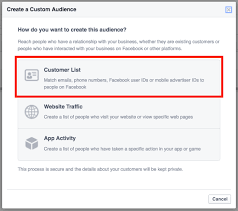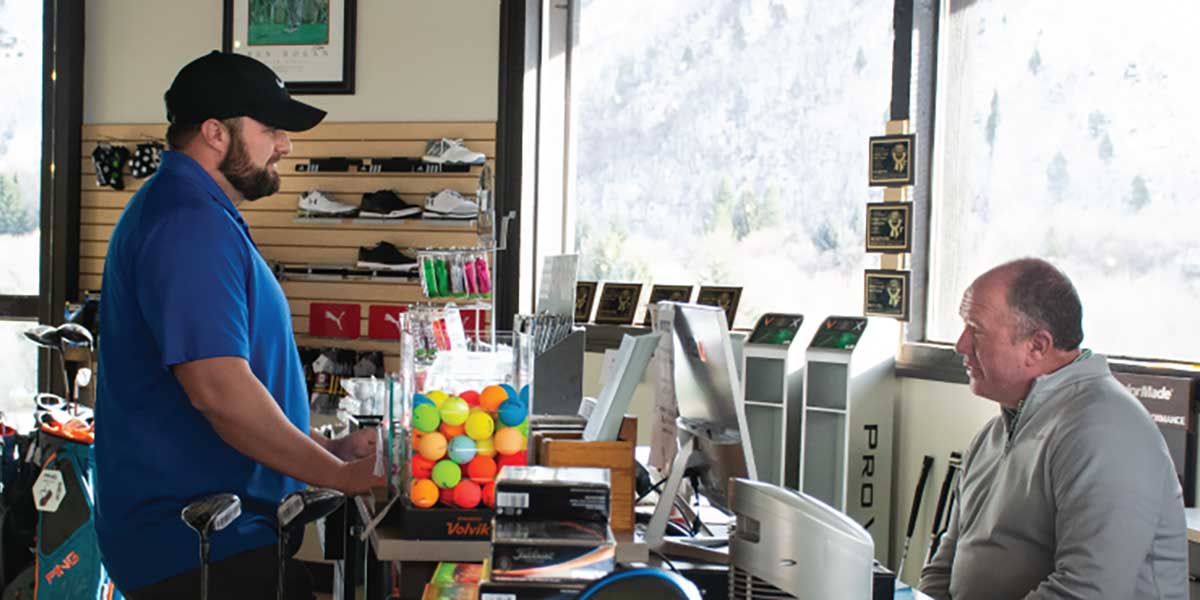Successful golf promotions rely on these key factors: knowledge of your audience, setting realistic and measurable goals, limited availability or scarcity, sufficient promotion through your channels, and offering a real value to your customers. With this in mind, you can design promotions that work for your specific audience.
One of the most effective ways to drive sales is by bundling products. In fact, product recommendations can account for as much as 10 – 30 percent of sales. This is a strategy you can use with online sales by tagging and recommending products based on what’s in your customers carts or based on what they’ve purchased in the past.
However, personalized product bundling is also a place where your sales team can really shine. Using your POS data, you can identify the types of products that are often purchased together and create product bundles. Your sales team can then sell those bundles or create their own based on an individual customer while they are in-store.
Your data can come up with some creative product pairings that might not be immediately apparent, so don’t be afraid to experiment with bundles but ensure they still make sense together and provide value. You’ll also want to time your promotions effectively and make use of events, holidays, or seasons to drive the types of products you bundle and how you discount.
Bring Your Promotion In-Store
Create consistency in your online and in-store experiences and your customers will have a greater chance of connecting with your promotions and making purchases. Your in-store promotions should use the same language and imagery as your online and email promotions. Then, use your floor space and in-person experience to create a display that sells.
Here are some tactics that you can customize based on your own customers:
- Organize items into categories that make sense. Knowing where to find merchandise makes a more comfortable and less confusing experience.
- Group sale items together in a display for holidays such as Father’s Day, Mother’s Day or Christmas. Consider adding a few non-golf related items to the display. This works especially well if your shop is near a college or if you have a logo or brand that your customers love.
- Bring in interesting props or displays. Some successful displays have used motorcycles, golf carts, or tents to show product in a unique way.
- Whenever possible, encourage testing and engaging with the product either with or without an employee’s help.
- Show your customers how your product looks. Display merchandise and group it together in a way that gives a clear vision of how they’d look owning it.
- Keep your Point of Purchase displays well-stocked and use that space for consistent sellers and a place to experiment with new product.
Another component of your displays and in-store experience is your signage. Just like digital advertising, the key is to direct your customer to what you want them to do. So, display your bundles and promotions prominently with signs that show value and give a sense of urgency or scarcity.
Communicate Your Promotion
Your golf promotions will only be successful if your customers know about them and understand them. Knowing how best to reach your customers requires a little knowledge about who they are and what kind of communication and experience they expect. Use digital marketing to drive your promotions will get more customers in the door and keep them connected with you, even when they aren’t on the course. A good place to start with a digital marketing campaign is a combination of email, text messages, and Facebook ads.
Email Marketing
Your customers’ email addresses are some of the most valuable pieces of information you can collect. Why? Because studies consistently show that consumers prefer email for communicating with brands they’re already connected with (in other words, your players want you to email them!) Plus, 95% of professionals use email, which makes it a much more reliable place to reach them than social platforms or phone calls.
With email marketing for your golf course, you can reach prospects directly without having to go through any middle party (e.g. Facebook) or incur extra expenses (e.g. direct mail). Any marketing campaign you engage in should have a strong email component.
Segment and organize your lists. Not every email promotion should go to every customer. They have different needs and motivations, and taking the time to group your list into segments that make sense will increase your open rates, click-through rates, and conversions as well as reduce unsubscribes and spam complaints.
Create engaging content with valuable offers. Like most adults in the US, many of your customers use email for shopping and deal-finding—which includes sale notices or coupons for your pro shop. In fact, 45% of people redeem coupons from emails on their mobile devices, which is another reason to make sure your emails are mobile optimized!
These days, email providers are good at filtering out promotional emails and you might find that if you don’t send relevant email, your delivery and open rates will suffer because your customers never see them. So, only communicate with you have something important to say and be sure to get to the point. Also, don’t forget to personalize your emails by using your customer’s name!
Track your engagement and clicks. With emails, the best way to measure performance is through opens, clicks, and conversions. You can test different subject lines and promotional offers to see what works with your audience.
{{cta(‘c531d564-0430-42f7-8d4b-cc23c3affcd5′,’justifycenter’)}}
Text Promotions
Text promotions for your golf course are even more immediate than email marketing, which means you should use just as much care in how you communicate.
 Text message marketing is particularly effective for reaching millennials, since 98 percent of millennials in the United States own a phone capable of receiving SMS messages. Even more staggering, 83 percent of millennials read their messages within 90 seconds of receiving them.
Text message marketing is particularly effective for reaching millennials, since 98 percent of millennials in the United States own a phone capable of receiving SMS messages. Even more staggering, 83 percent of millennials read their messages within 90 seconds of receiving them.
But even if millennials and younger golfers aren’t your audience, a well-crafted and timed text promotion campaign can be a huge boost to sales for all audiences.
Communicating with the older demographic often feels more challenging, because aging generations have typically been slower to adopt technology like SMS messaging. However, a couple of important factors indicate that you shouldn’t rule text messaging out for the older demographic:
- Seniors want to be communicated with. As people grow older, you should use any touch point you have available to engage them and build personal, trusting relationships.
- Older generations tend to prefer straight forward messages. SMS character limits force short-but-sweet communication, making it simple to deliver clear, concise messages without seeming impersonal.
- Every year, the number of seniors using text messages increases dramatically. Start to form relationships via SMS now, while the older demographic is starting to really dig in and find the value in quick communication tactics like texting.
Here are a few things to remember as you craft your text marketing messages:
- Customize to your audience. Sending texts that feel exclusive and timely will be better received than irrelevant messages. So, if you’re sending out a promotion related to clothing, try to tailor it toward gender or even buying behavior if possible.
- Make it timely. If the weather is particularly good for golf, send out a reminder in the early afternoon to drive traffic to your shop.
- Keep it short and simple. Text messages should be 160 characters in length or shorter because some phone will break off longer messages into two and disrupt the flow. However, 160 characters is more than enough to create an enticing offer and a timely call to action. Be sure to include who the message is for, what the offer is, how to redeem it, and when it expires.
Facebook Ads
It can be tempting to write off social media only as a way to connect with a younger demographic. However, Facebook in particular has become an excellent way to reach adults. According to a Business Insider survey, US Facebook users aged 45-54 are spending more time on Facebook and represent 21 percent of the total time spent on the platform, more than any other age group. With properly targeted Facebook ads, you can spend a little money to reach a lot of new and existing customers.

1. Set up your audiences.
The Facebook Ads Manager tool can be a little unwieldy and intimidating for new users, but there Facebook has some great resources for beginners. Setting up “audiences” allows you to target the audience for your social messages. Simply go into your Ads Manager account and select “Audiences” from the drop down. Take some time to set up a few different audiences so you can quickly deliver the right message to the right people.
 Here are a few basic audiences you should set up:
Here are a few basic audiences you should set up:
- Customer lists. You can upload your email lists as a new audience. That way, you can target specific promotions to them via email and Facebook. (You can also suppress your ads against this customer list if you’re trying to drum up new business.)
- Website visitors. Set up a Facebook pixel (learn more about how here), and Facebook will track visitors to your website so you can send promotions to people who have checked in or visited your website in the last 30 days.
- Demographics. Reach new customers by targeting Facebook users in your area who have golf-related interests with ads that drive traffic to your website.
2. Create targeted ads.
Once you’ve created your audiences and have your promotion planned out, use video, images, and even links to ecommerce sections of your website to drive traffic and conversions. Thanks to the Facebook Pixel, you can measure your results in real time and make adjustments as needed.
3. Optimize and retarget.
Obviously we’re just scratching the surface with Facebook ads. After you’ve spent some time and a little money, look at which audiences are engaging—or not—with your ads. Using Facebook Ads Manager, you can reach more people with the same interests and demographics and reduce the amount of money you spend per impression and click.
Promotions for your shop are easier and more cost-effective than ever with tools like email, text, and social media. You can spend a little time and money to reach your target audience and provide the customized experience your customers are looking for.
It’s okay to start slow and focus on one of these strategies at a time and continue to build and grow the ideas that work.
So What’s the Conclusion?
This post concludes our series about increasing merchandise revenue.
Learning about your customers and what they want allows you to tailor their buying experiences to their individual needs. While this sounds overwhelming, the data you’ve already gathered and continue to gather from your point of sale is a good place to start. Any solution you implement can start small and scale up as you continue to automate and optimize your promotions.
However, the rewards of a curated and customized shopping experience for your customers will be seismic. Your dedicated customers will feel valued and like they’re part of a customer-centered experience. As a result, they will come back to your shop and website. You’ll also continue to bring in new customers and make them raving fans.
All of this adds up to a forward-thinking strategy that will keep you ahead of competitors.
Get the complete guide for more information, ideas, and How Tos.
